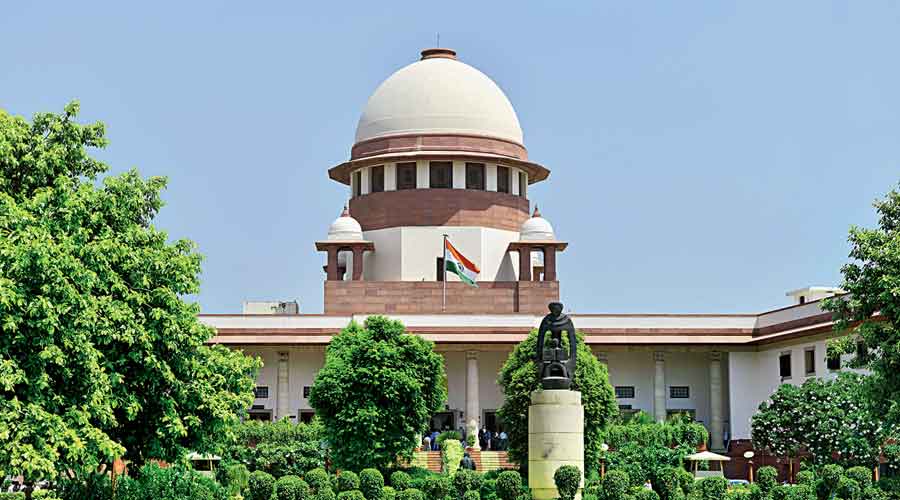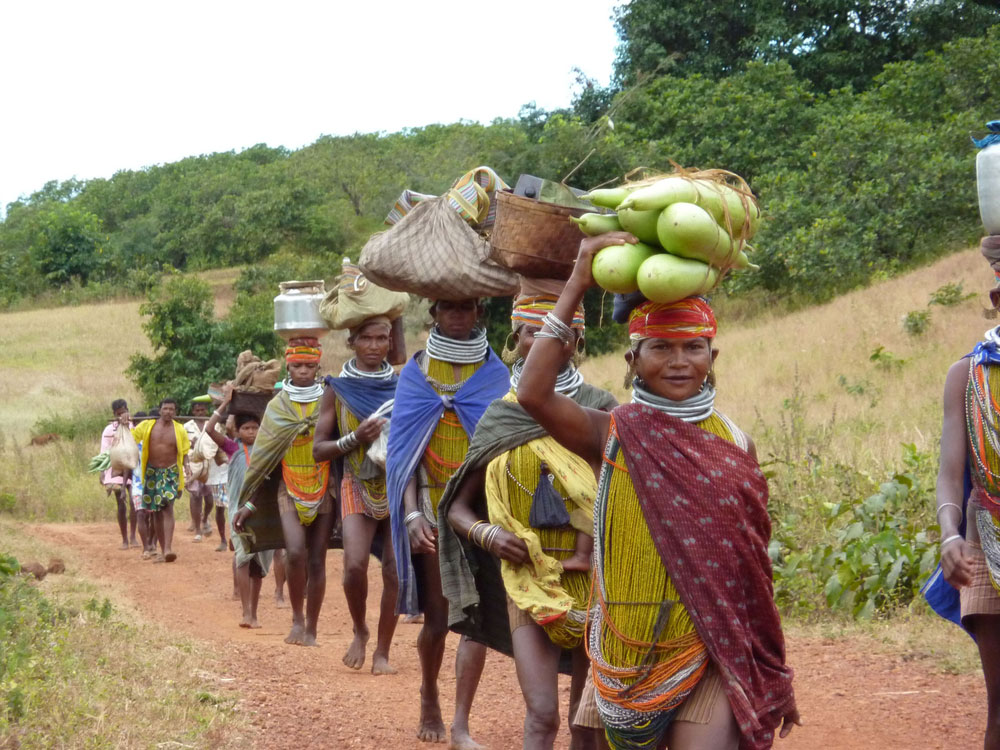The National Human Rights Commission (NHRC) announced a camp-sitting-cum-open-hearing in Raipur, Chhattisgarh, on 13-14 February 2020 on complaints related to Scheduled Castes (SC) and Scheduled Tribes (ST). The announcement had raised hopes among the SC and ST communities of getting relief. However, the hopes were short-lived, especially among the Adivasis (STs), because it soon became clear that their cases would not surface during the hearing.
NHRC has restricted the hearing to “fresh” complaints of SC and ST against public servants. The commission has clarified that cases from conflict zones would not be entertained. In a similar hearing in 2013 headed by the then Chairperson Justice (retd) K.G. Balakrishnan, among other cases, the commission had heard complaints of encounter killing of a girl, fake encounters, excesses by Salwa Judum[1] members, torching of houses in police rampage, rape of a girl by CRPF, torture of Soni Sori in police custody. An entire day was spent on complaints pertaining to encounter deaths from Dantewada and Bastar. This time NHRC will not be hearing any such cases.
Since Adivasi human rights has always been an area of concern in Chhattisgarh, it was expected that the hearing would address such cases. The ongoing Maoist conflict and anti-Maoist operations – whether it is under the erstwhile Salwa Judum and the latter Samajik Ekta Manch or the ongoing Operation Green Hunt – need a critical review. Every other day, there are reports of violence from this crisis-ridden zone.
Undoubtedly these victims of armed conflict suffer from excessive violations of rights both under Indian and international laws. Though the Constitution categorically recognizes these rights as fundamental rights, the rampant violations are usually swept under the carpet in most of the Adivasi regions of India. Various other laws have sections and clauses to uphold the human rights of Adivasis, yet they are seldom enforced.
No relief from NHRC in conflict zones
On the NHRC refusing to hear cases from conflict zones, Akhilesh Edgar of Chhattisgarh Nagrik Sanyukt Sangarsh Samiti (CNSSS) says: “In the past NHRC [hearing] has come on many occasions as a relief in Chhattisgarh to uphold Adivasi rights, particularly in Bastar. This time around, things do not appear the same.”
Political activists are concerned that when those responsible for acts of violence go unpunished, it creates a culture of impunity. This allows the police and security forces to get away with criminal conduct. Ramesh Thakur, editor of Gondwana Swadesh, says “if the NHRC can’t deal with cases of Adivasis in Bastar, then the visit itself seems a stage-managed show. It will only remain as a formality exercise.”

Media reports suggests that the recent turnaround of NHRC is baffling for the simple reason that the institution is meant to protect the rights of common citizens. People’s Union of Civil Liberties (PUCL) has placed scores of complaints before the commission after investigating many cases. Chhattisgarh High Court lawyer Asish Beck expressed his hopelessness in this exercise, while researcher Akash Poyam expressed his doubt about the present NHRC process as a justice delivery mechanism. He says, “They [government] should dismantle the DRGs [District Reserve Groups] and rehabilitate them.”
In the past victims, lawyers and activists have sent many applications to NHRC, which have been pending without any relief or settlement. Soni Sori, one of the victims as well as applicants, was surprised that she had not even heard of such a hearing. “If NHRC is coming to Chhattisgarh for a hearing and they are not willing to take earlier cases how would victims like me find justice within the frames of the law? Though during the last hearing of NHRC nothing happened in my case, yet it was important that they heard my case. This is just a strategy to avoid serious cases of human rights violations that have happened in the state,” says Sori.
Story of the Sarkeguda encounter
Nearly eight years ago, in 2012, in an alleged encounter between security forces and Maoists, 17 villagers, including seven minors, were killed. The incident occurred between the villages of Sarkeguda, Kothaguda and Rajpenta on the night of 28 June 2012. This operation was hailed as a major success by both the then Bharatiya Janata Party (BJP) state government, as well as the Congress-led Centre. Then union home minister P. Chidambaram went on to describe it as one of the “biggest offensives against Maoists”, in which three important leaders of the movement were killed, namely Somulu, Nagesh and Mahesh.
Villagers dismissed the fake news of the encounter, claiming that the police and security forces had engaged in one-sided firing. It was an incident of coldblooded murder of Adivasis on the pretext of an operation against Maoists. A judicial inquiry was ordered by then chief minister Raman Singh in the face of mounting pressure from human rights groups and members of political parties and the wide media coverage the incident received.

The single-member judicial commission of Justice Vijay Kumar Agrawal, a former Madhya Pradesh High Court judge, concurred with the villagers’ claims. The report said that the police’s claim of firing by the villagers was wrong and the security forces could not provide any proof that those they fired at were Maoists. The police and security personnel did in fact open fire on unarmed villagers. It even establishes that of the 17 people killed, one was murdered at his home the morning after the incident.
What the security forces told the commission was that on receiving intelligence inputs, CRPF and the state police, split into three groups, decided to leave for an operation on the night of June 28. When the police were fired upon in the dark, they were taken by surprise. This prompted the security forces to return fire. The inquiry commission report says it did not find any conclusive evidence that the villagers fired on the security forces or that the confrontation was with members of a Naxal outfit.
The report notes: “It has not been proved that the persons killed and injured in the incident other than security personnel were Naxals as there is no satisfactory evidence in that regard.” Moreover, the report states that the claim made by the security forces that they fired in response to villagers’ firing “does not stand the test of scrutiny.”
The report submitted on 17 October 2019 was later presented before the Chhattisgarh Cabinet and tabled in the Assembly in December 2019. According to the report, only the personnel of the Central Reserve Police Force (CRPF) and the state police had fired their weapons.
“The conduct of Deputy Inspector General (DIG) S. Elango as well as Deputy Commander Manish Bamola [who were leading the operation] of not firing a single bullet shot during the incident, as per their own admission, clearly indicates that there was no firing by the members of the meeting; because had there been firing from the persons present at the meeting both the above senior officers would have certainly fired in retaliation and self-defence,” reads the paragraph 146 of the 76-page report.
Living at gunpoint in Bastar
The Sarkeguda massacre is not an isolated incident. Fake encounters continue to take lives of Adivasis in Bastar. Many similar incidents have been brought to light by rights groups and but many others continue to get buried in silence. Violation of the law under the guise of combatting Maoism has become commonplace in Bastar.
Human rights bodies say that fake encounters, forced surrenders and sexual violence perpetrated by the police and security forces have become the norm in combing operations. Media reports have highlighted the involvement of the police and security forces in gang rapes and mass sexual violence on the women of Peddagellur and Nendra. Recently the encounter killing of Lacchu Mandavi and Podiya Sodi had shocked the rights activists in Chhattisgarh. Both these youngsters were key organizers in the struggle against the allotment of iron-ore mine on Nandraj hills to Adani group in Bailadila. They were active in the movement in June 2019 to save the sacred land of the Nandraj hill and were killed in September 2019.
Researcher Bela Bhatia gives an account of another encounter of 2 February 2019 in which Podiyam Sukki of Godelguda village in Sukma’s Konta tehsil died on the spot, while two others survived. In this encounter Kalmu Deve was hit on her leg while Podiyam Hungi escaped the gunshot by a close margin. The Superintendent of Police first claimed that CRPF forces from the Puswada camp and district police personnel had gone to Rangaiguda forests on an “area domination exercise”, and were returning from there when there was an encounter with Maoists close to Godelguda in which a Naxali woman was killed and another Naxali woman was injured and apprehended. In the face of allegations of a fake encounter, the SP modified his statement slightly, accepting that the women were civilians (“they were not in Maoist uniforms”) and claimed that they were killed in crossfire during an encounter with the Maoists.

However, the SP’s encounter and crossfire stories are at odds with what Deve, Hungi, and other villagers have maintained – that there were no Maoists around that day and there was no exchange of fire.
On 8 February 2019, Kawasi Lakhma, the Congress MLA of Konta constituency – in which Godelguda falls – and a minister in the state Cabinet wrote a letter to Chief Minister Bhupesh Baghel about this incident. He declared the entire episode as fake in these words: “… the real situation is that the CRPF and district police teams had left from the Puswada camp towards Rangaiguda for an operation. Near Godelguda, two women, Podiyam Sukki and Kalmu Deve, had gone out to cut wood. During their return on the Godelguda road, the CRPF and district police, holding that the two were suspected Maoists, opened fire in which one woman, Sukki, was killed and another, Kalmu, was injured. Kalmu Deve’s foot was broken. From the Godelguda marg or from the women victims, no Maoist material or weapons were recovered at all. It is clear the innocent Adivasi women were fired upon by jawans. The deceased Sukki has four children and the youngest is six months old.”
In 2016, an eight-member team of All India People’s Forum (AIPF) also conducted fact-finding in four districts of Bastar region in which the team found several cases of human rights violations on the pretext of anti-Maoist combing operation. Killings, rapes, beatings, arson and other criminal activities were regularly reported by newspapers, of which a few are mentioned here.
- In November 2015, four women Rame, Pandi, Sunno and Mase were raped and killed in a fake encounter in Nagalguda village under Gadiras police station of Kuakonda Tehsil in Dantewada district.
- In November 2015, three youths Dudhi Bhima, Sodhi Muya and Vetti Lacchu were killed in a fake encounter in Arlampallil village of Sukma district.
- In January 2016, police claimed that two women Maoists Siriyam Pojje and Manjam Shanti were killed after an hour-long gun battle. They were from Palamgadu village of Sukma district.
- In February 2016, Soni Sori was attacked in Geedam with a tar-like substance that burnt her face, which took almost another year for her to recover from it.
- In May 2016, two boys, Markam Manglu and Podiyam Vijja went to bathe in a nearby stream. The patrolling force found them all by themselves, shot them and announced to the press that they had killed two Maoists.
- In May 2016, police claimed that an encounter took place with 30-35 armed Maoists, in which a husband and wife – Manoj Hapka and Pandi Hapka (also Tanti) – were killed.
- In June 2016, Madkam Hidme was killed supposedly as part of an anti-Maoist operation in Gompad village of Sukma district of Chhattisgarh. Later her body was draped in a brand-new Maoist uniform.
- In December 2016, Adivasi women in Bastar, Chhattisgarh, complained of sexual molestation and abuse by security forces.
- In April 2017, Jailal Rathia, an Adivasi activist, died in Raigarh, Chhattisgarh, after allegedly being poisoned by members of a land mafia he was campaigning against.
- In September 2017, Manish Kunjam was attacked in Bastar for his daring declaration, “Do not kill out ancestor Mahisasur and Ravana.”
- In March 2018, Adivasi villagers in Sukma, Chhattisgarh, accused security force personnel of gang-raping a 14-year-old Adivasi girl.
- In April 2018, three leaders along with many followers of Pathalgadi movement have been arrested for sedition, war against the State and other criminal offences. Human rights groups and individuals who speak on these violations have been thrown out of the region consistently.
In November 2016, statistics were published stating that over 6,500 crimes were committed against Scheduled Tribes in that year alone. Nearly 3500 encounters (big, small and unreported) had taken place in the previous six years under the anti-Maoist operations in which over 1900 people lost their lives.
Mentally challenged Sannu Hemla arrested as a Maoist
On 7 December 2019, Lingaram Kodopi, a journalist from Bastar, has uploaded a video on Basterkoya Times, which tells the story of Sannu Hemla – a mentally challenged person from Nahadi Marpara panchayat of Dantewada district. Police officials in the district had claimed that a former Maoist from Nahadi Marpara had surrendered at Patali camp. It is said that the surrendered Maoist carried a prize money of 1 lakh rupees on his head. According to family members, the “Maoist”, Sannu, was mentally challenged.

When the family went to meet the youth, the police allowed the family to meet him. Such things are rather unusual in cases where people are arrested in connection with Maoist activities. “When I met the family, Keshav Hemla, Sannu’s younger brother, told me that his brother would have manic episodes regularly, when he would go on speaking whatever came to his mind. When some people were around Sannu, he would say that people were coming to kill him,” writes Kodopi.
It was because of his mental condition that he told the police that he was the Nahadi president of Dandakaranya Mazdoor Kisan Sangathan (Dandakaranya Labour Peasant Organization) – one of the Maoist outfits. According to Keshav, the police told Sannu that he would get Rs 1 lakh if he would admit to being a prized Naxalite. “And perhaps this one lakh money has also been devoured by police,” writes Kodopi.
The family members said that the police kept Sannu in custody for three-four days. A few days later when the family members went to check on his wellbeing, the police told them that he had absconded. Sannu’s family is worried. They are still searching for him.
The fight for justice and the upholding of human rights and Constitutional values of Adivasis is far from over for the people of Bastar. The legal struggle of the villagers is testament to their faith in the judiciary and Constitution. They deserve the justice they have so fearlessly fought for, and it is the responsibility of the Chhattisgarh government to ensure that justice is served. The land and forests that sustain their lives should no longer be turned into battlegrounds for the corporates.
[1] Salwa Judum was the armed vigilante group. Many of its members were surrendered Maoists. Other villagers who mostly aligned with the contractors, businessmen, politicians, spies and police informers also became members of the group. Armed by the State, the group went on to create more and more problems for the ordinary people. Later this was dissolved under strict instruction from the Supreme Court. However, the entire force was converted to an auxiliary armed police force under the Chhattisgarh Auxiliary Armed Police Force Act, 2011.
Copy-editing: Anil






